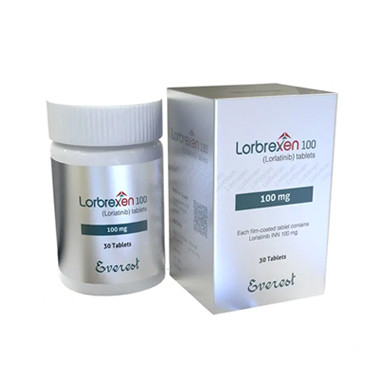Lorlatinib is a tyrosine kinase inhibitor (TKI) that targets specific gene mutations associated with non-small cell lung cancer (NSCLC). It has been specifically designed to combat anaplastic lymphoma kinase (ALK) gene mutations, which are present in approximately 5% of NSCLC cases. These mutations can cause cells to grow and divide rapidly, leading to the development of tumors.
The development of lorlatinib is a result of years of dedicated research and clinical trials. The initial studies showcased promising results, demonstrating that lorlatinib effectively reduces tumor size and slows down the progression of the disease. In 2018, the United States Food and Drug Administration (FDA) approved lorlatinib as a treatment option for ALK-positive metastatic NSCLC.
What sets lorlatinib apart from other TKIs is its ability to penetrate the blood-brain barrier. This barrier often prevents drugs from reaching cancer cells in the brain, limiting the effectiveness of traditional treatments. However, lorlatinib has proven to be highly effective in treating brain metastases, making it a game-changer in the field of lung cancer treatment. This is particularly significant since brain metastasis is a common occurrence in patients with ALK-positive NSCLC.
Despite its effectiveness, lorlatinib does come with some side effects, as is the case with most cancer treatments. The most commonly reported side effects include edema (swelling), cognitive impairment, and abnormalities in cholesterol levels. However, these side effects are generally manageable and do not diminish the drug's overall benefits.
Moreover, lorlatinib offers an alternative treatment option for patients who have developed resistance to other TKIs such as crizotinib or ceritinib. In the past, patients with ALK-positive NSCLC often experienced a relapse after initial treatment. However, with lorlatinib, they now have a chance to overcome resistance and maintain control over the disease for a longer period.
The availability of lorlatinib has greatly improved the outlook for patients with ALK-positive NSCLC. It is providing them with extended survival rates and improved quality of life. However, it is important to note that lorlatinib is not a one-size-fits-all solution. Each patient's treatment plan must be tailored to their unique circumstances and genetic profile. Therefore, it is crucial for patients to consult with their healthcare providers to determine the most suitable course of action.
In conclusion, lorlatinib represents a significant breakthrough in the treatment of ALK-positive metastatic NSCLC. Its ability to cross the blood-brain barrier and effectively target gene mutations associated with the disease makes it a powerful tool in the fight against lung cancer. While further research and clinical trials are ongoing, lorlatinib is already making a positive impact on the lives of lung cancer patients, offering them renewed hope and a chance for a better future.











